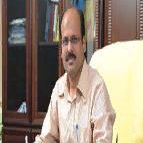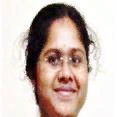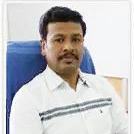International Journal of Engineering and Manufacturing (IJEM)
IJEM Vol. 4, No. 3, 18 Dec. 2014
Cover page and Table of Contents: PDF (size: 413KB)
Simulation Studies of Silica and High K Oxide Contained MOS Circuits (45nm, 32nm and 22nm) for Power Dissipation Reduction
Full Text (PDF, 413KB), PP.13-21
Views: 0 Downloads: 0
Author(s)
Index Terms
MOSFET, Inverter, NAND gate, Predictive Technology Model, H-Spice Tool, Power dissipation
Abstract
Advances in semiconductor technology lead to the advancements in integrated circuits which have enhanced performance, reliability, cost effective, low power consumption, etc. To build a complex digital circuitry, millions of transistors are to be embedded onto a single chip to increase the performance and to improve the reliability of the electronic device. This paper aims at building of N-MOSFET, P-MOSFET, CMOS inverter and NAND gate using conventional SiO2 oxide layer and high k oxide layer each of 45nm, 32nm and 22nm technologies respectively and to determine the percentage reduction in power dissipation using high k oxide layer in each device. The above mentioned devices are built using an online Predictive Technology Model tool and H-Spice simulation software and the simulated results are compared.
Cite This Paper
K.Bikshalu, V.S.K. Reddy, M.V. Manasa, K. Venkateswara Rao,"Simulation Studies of Silica and High K Oxide Contained MOS Circuits (45nm, 32nm and 22nm) for Power Dissipation Reduction", IJEM, vol.4, no.3, pp.13-21, 2014. DOI: 10.5815/ijem.2014.03.02
Reference
[1]Frank Anthony Hurtado and Eugene John, "A Comparative Analysis Of Leakage Reduction Techniques In Nanoscale CMOS Arithmetic Circuits", Proceedings of the 2014 ASEE Gulf-Southwest Conference Organized by Tulane University, New Orleans, Louisiana.
[2]P. Kapur, R. S. Shenoy, A.K. Chao, Y. Nishi and K. C. Saraswat, "Power Optimization of Future Transistors and a Resulting Global Comparison Standard", 2004, 0-7803-8684-1, IEEE.
[3]Ebrahim Nadimi, Philipp Plänitz, Rolf Öttking, Karsten Wieczorek, and Christian Radehaus, "First Principle Calculation of the Leakage Current Through SiO2 and SiOxN Gate Dielectrics in MOSFETs", 2010, 57, 3, IEEE Transactions On Electron Devices.
[4]W. Tsai, N. Goel, S. Koveshnikov, P. Majhi, W. Wang, "Challenges of integration of high-j dielectric with III–V materials", 2009, 86, 1540–1543, Microelectronic Engineering, Science Direct.
[5]Yudong Kim, Gabriel Gebara, Michael Freiler, Joel Barnett, Deborah Riley, Jerry Chen, Kenneth Torres, JaeEun Lim, Brendan Foran, Fred Shaapur, Avinash Agarwal, Patrick Lysaght, George A. Brown, Chadwin Young, Swarnal Borthakur, Hong-Jyh Li, Billy Nguyen, Peter Zeitzoff, Gennadi Bersuker, David Derro, Renate Bergmann, Robert W. Murto, Alex Hou, Howard R. Huff, 'Eric Shero, 'Christophe Pomarede, 'Michael Givens, 'Mike Mazanec, and 'Chris Werkhoven, "Conventional n-channel MOSFET devices using single layer HfO2 and ZrO2 as high-k gate dielectrics with polysilicon gate electrode", 2001, 01, 0-7803-7050-3, IEEE.
[6]Marlia Morsin, Mohd Khairul Amriey, Abdul Majeed Zulkipli and Rahmat Sanudin, "Design, Simulation and Characterization of 50nm p-well MOSFET Using Sentaurus TCAD Software", Proceedings of MUCEET, 2009.
[7]Marlia binti Morsin, Mohd Khairul Amriey, "Designing and Characterization of 60nm p-well MOSFET Using Sentaurus TCAD Software", 2010, 10, 978-1-4244-7406-6, IEEE.
[8]Xinlin Wang, *Ghavam Shahidi, Phil Oldiges and Mukesh Khare, "Device Scaling ofHigh Performance MOSFET with Metal Gate High-K at 32nm Technology Node and Beyond", 2008, 08, 978-1-4244-1753-7, IEEE.
[9]Chris A. Mack, "Fifty Years of Moore's Law", 24, 2, IEEE Transactions On Semiconductor Manufacturing, 2011.
[10]Jack C. Lee, H. J. Cho, C. S. Kang, S. Rhee, Y. H. Kim, R. Choi, C. Y. Kang, C. Choi, M. Abkar, "High-K Dielectrics and MOSFET Characteristics", 2003, 03, 0-7803-7872-5, IEEE.
[11]Gang He, Liqiang Zhu, Zhaoqi Sun, Qing Wan, Lide Zhang, "Integrations and challenges of novel high-k gate stacks in advanced CMOS technology", Progress in Materials Science, 2011, 56, 475-572, Science Direct.



